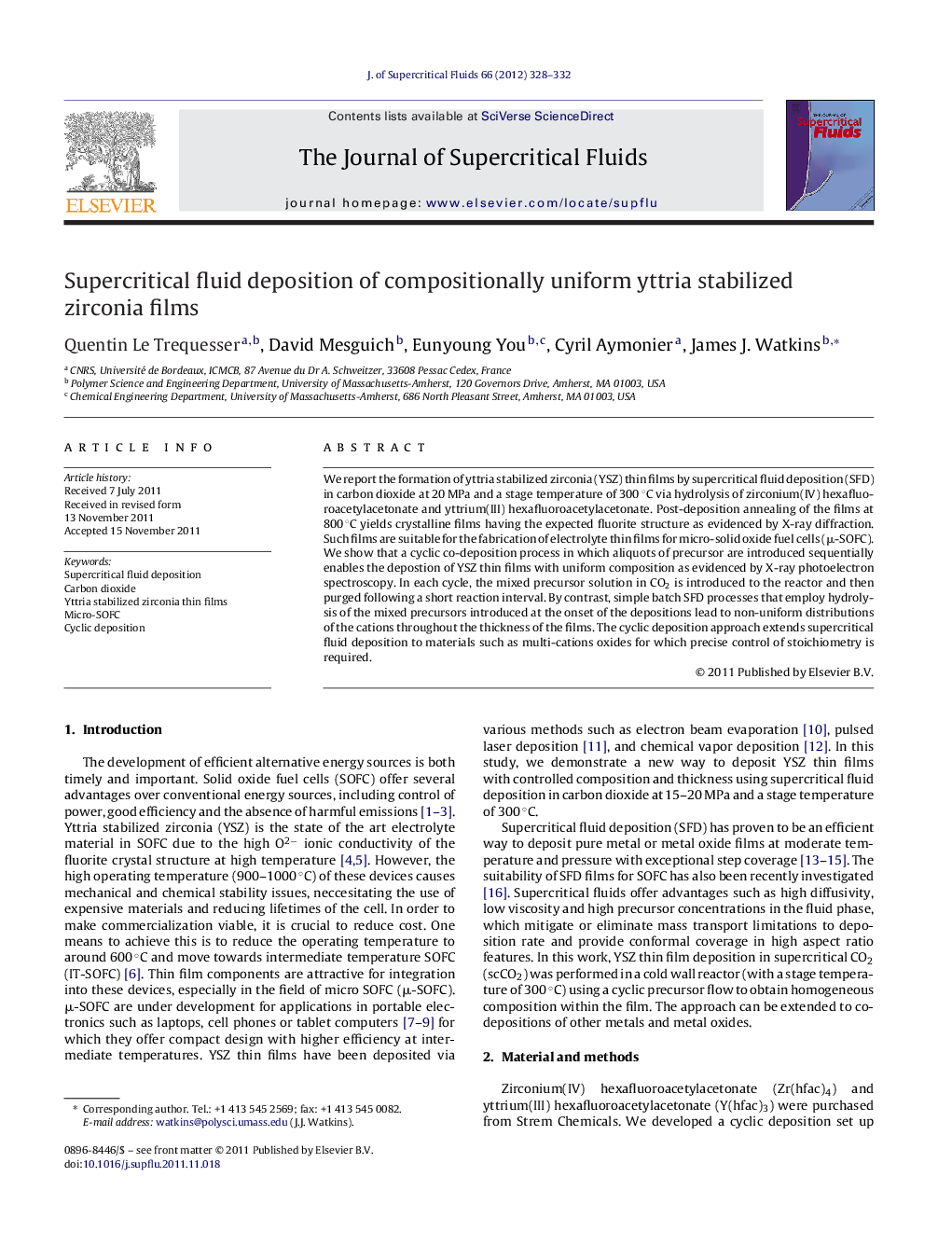| Article ID | Journal | Published Year | Pages | File Type |
|---|---|---|---|---|
| 231129 | The Journal of Supercritical Fluids | 2012 | 5 Pages |
We report the formation of yttria stabilized zirconia (YSZ) thin films by supercritical fluid deposition (SFD) in carbon dioxide at 20 MPa and a stage temperature of 300 °C via hydrolysis of zirconium(IV) hexafluoroacetylacetonate and yttrium(III) hexafluoroacetylacetonate. Post-deposition annealing of the films at 800 °C yields crystalline films having the expected fluorite structure as evidenced by X-ray diffraction. Such films are suitable for the fabrication of electrolyte thin films for micro-solid oxide fuel cells (μ-SOFC). We show that a cyclic co-deposition process in which aliquots of precursor are introduced sequentially enables the depostion of YSZ thin films with uniform composition as evidenced by X-ray photoelectron spectroscopy. In each cycle, the mixed precursor solution in CO2 is introduced to the reactor and then purged following a short reaction interval. By contrast, simple batch SFD processes that employ hydrolysis of the mixed precursors introduced at the onset of the depositions lead to non-uniform distributions of the cations throughout the thickness of the films. The cyclic deposition approach extends supercritical fluid deposition to materials such as multi-cations oxides for which precise control of stoichiometry is required.
Graphical abstractFigure optionsDownload full-size imageDownload as PowerPoint slideHighlights► YSZ thin films are formed by supercritical fluid deposition by hydrolysis of Zr and Y β-diketonates in scCO2. ► Precursors have different deposition rates resulting in a gradient in film composition. ► Cyclic deposition process leads to uniform YSZ films with stable composition.
